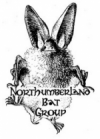Myotis Bats
This is a genus of similar looking and sounding bat species with varying preferences and characteristics.There are 4 known species of Myotis bat in Northumberland, but many more across the world!
Sadly Britain’s most recent extinction was the Greater Mouse Eared Bat (Myotis myotis) in 1990. All of the bats in teh UK based Myotis genus, have distinctly dark dorsal (back) and pale / white ventral (tummy) fur.
For a beginner bat-watcher, the Myotis bats are not easy to tell apart. All have a strong preference for hibernating in caves, mine-shafts, ice-houses and cracks in stonework where they will remain at a steady cool temperature throughout the winter (such as the bat in the picture to the right).
They are noted to swarm in front of some of these sites in autumn prior to hibernating (possibly as part of a mating ritual?).
Unlike many other species they do not have a particular call frequency, their call sweeps through all frequencies very rapidly. The call could go from 100kHy down to 30kHz!
Try tuning a bat detector to about 50kHz and listen for tonal differences as described for each species, but sometimes even computer analysis of their calls can’t correctly identify them, so just enjoy them as Myotis bats. Their calls on a bat detector can sometime sound like burning stubble in a field or rapid chips.
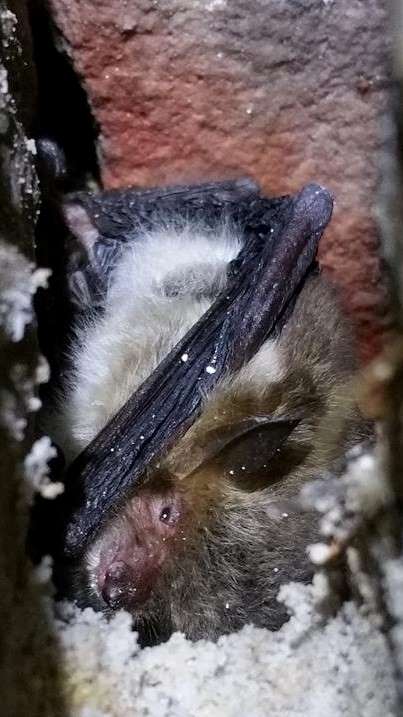
Daubenton’s Bat (Myotis daubentonii)
Also known as the water bat, this is usually seen skimming the surface of lakes, rivers and reservoirs, flying fast, low and using its large back feet as a gaff to flick mayflies and other insects to its mouth. They can change direction with great speed and are great fun to watch on a summer’s evening.
They are a medium sized bat, 7-10g and a wingspan of 240-275mm, with pale skin under the fur. They live in bridges, holes in trees or old stone buildings near to water, they prefer a cooler roost site than Pipistrelles. Pipistrelles have been known to hibernate in Daubenton’s summer roosts. Tracking studies in the Yorkshire dales have shown that females hunt and roost in lowland areas for preference, but in higher altitudes male bats are more predominant, only coming together during the mating season.The studies have also shown that sometimes up to 25% of a lowland roost may be male and any bat can use up to 3 different roosts in a season.
They move around quite a lot, taking their young with them from place to place.They come out to hunt 30-100 minutes after dusk. Scientific tracking studies have shown them to be faithful to particular stretches of water as a hunting ground each night, resting for short spells in trees on the bank side. Due to their habitat and choice of roost location, they are not normally a bat the public would happen across other than at a distance. Also for this reason, there are few known roosts in Northumberland, those that are known are well documented.
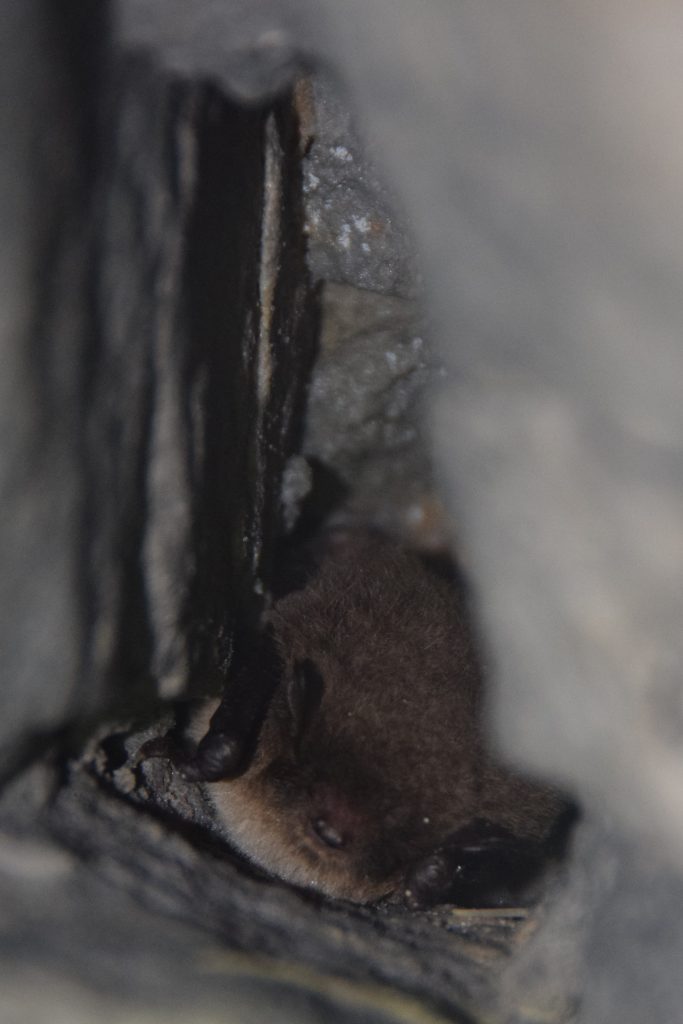
Natterer’s Bat (Myotis nattereri)
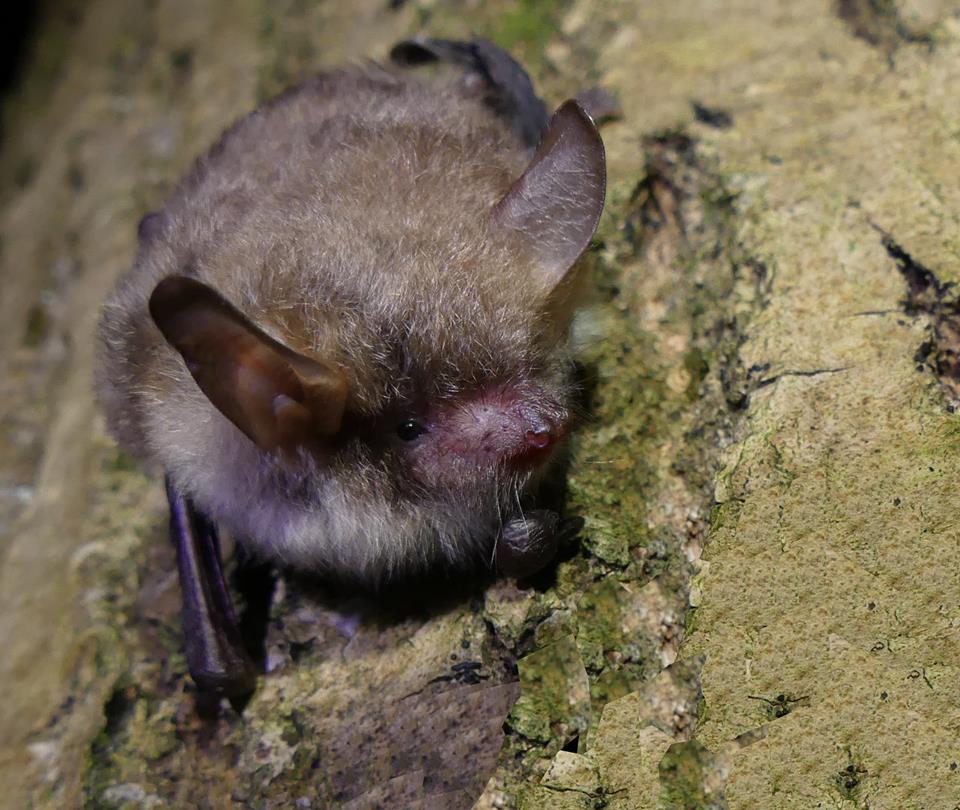
This bat is a similar size and in general appearance to the Daubenton’s bat in many ways, on average ever so slightly larger. Although they like feeding over rivers in Northumberland, they are also bats of woodland, parkland and hedgerows.
Over water they fly less close to the surface than Daubenton’s, and mid-air turns tend to be loops rather than sudden changes in direction. Their call is much softer than Daubenton’s when heard on a heterodyne bat detector and has been likened to the sound of burning stubble.T
hey are comparatively slow fliers and can pick individual insects off vegetation, even spiders from their webs without entanglement. They will chose larger prey where possible so, like the Brown Long Eareds, often eat moths.
Whiskered bat (Myotis mystacinus)
These bats very similar to the Brandt’s bats, the two were only separated as different species in the 1970’s. They are the smallest of the Myotis bats, (along with the Brandt’s bats) have very dark chocolate brown skin, are only 4-8g and have a wingspan of 210-240mm, on the whole they are marginally bigger than a pipistrelle but with the 2 tone fur can be distinguished from them easily. They have broader wings than Pipistrelles, and fly much slower and in a less fluttery fashion than they do. They hunt along hedges, in woodland clearings and in gardens, but are fairly rural in their preferences of habitat. Like Natterer’s they are agile in flight and pick insects off vegetation, they eat a lot of spiders and caddis flies. They form female-only nursery roosts of about 100 or so individuals, in hollow trees and stone buildings.
They are even less common than Natterer’s bats and very little is known about them, as they are so hard to distinguish from Brandt’s bats. They sound identical to Brandt’s on a bat detector, even under computer analysis, (so tend to be lumped together in the absence of other evidence, which is most of the time…).
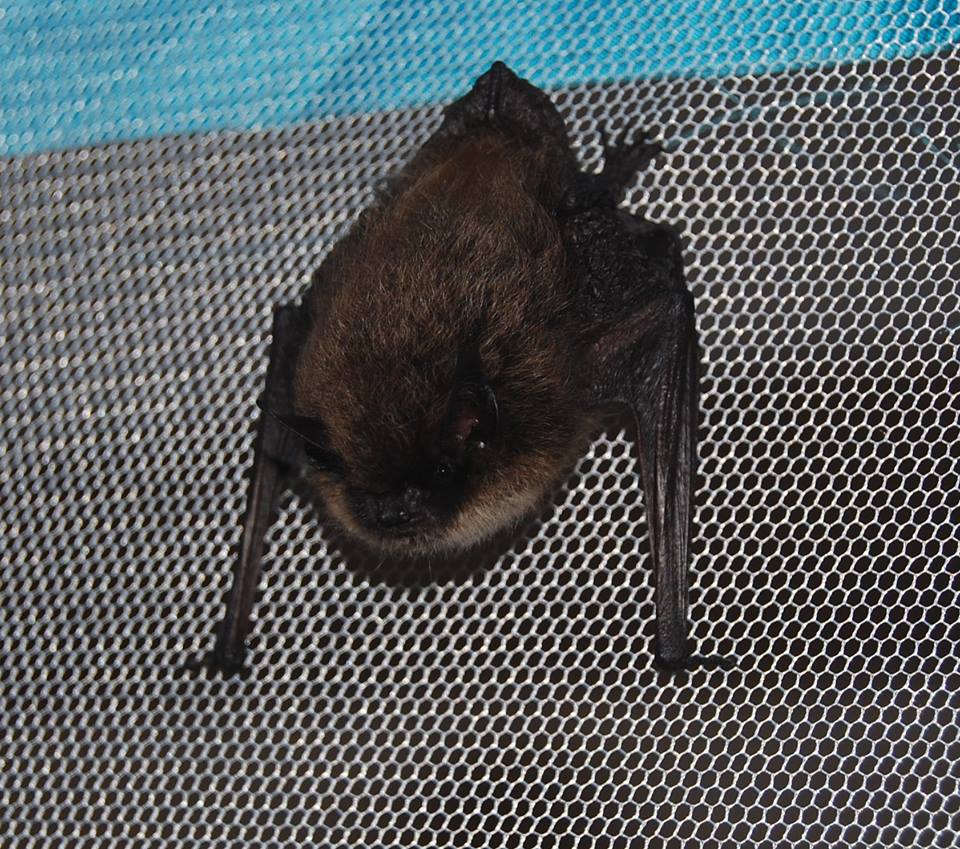
Brandt’s bats (Myotis brandtii)
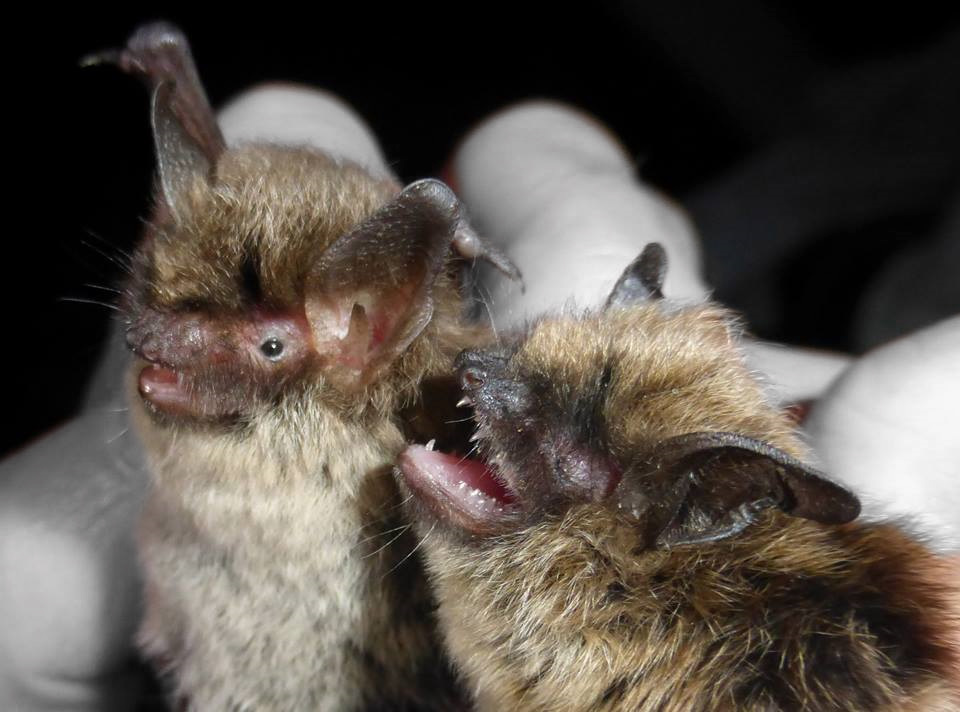
Alcathoe bat (Myotis alcathoe)
20th April 2010 the BBC reported that: A species of bat never seen before in the UK has been discovered in caves in Yorkshire and Sussex.
Myotis alcathoe, or Alcathoe’s bat, was found in woodland in Rydedale in the North York Moors National Park and the South Downs of Sussex.
Known only from Greece and Hungary when it was first described in 2001, its known distribution has since expanded to Spain, England, Sweden, and Azerbaijan, among other countries. It is similar to the whiskered bat (Myotis mystacinus) and other species and is difficult to distinguish from them.
With a forearm length of 30.8 to 34.6 mm (1.21 to 1.36 in) and body mass of 3.5 to 5.5 g (0.12 to 0.19 oz), Myotis alcathoe is a small bat. The fur is usually reddish-brown on the upperparts and brown below, but more grayish in juveniles. The tragus (a projection on the inner side of the ear) is short, as is the ear itself, and the inner side of the ear is pale at the base. The wings are brown and the baculum (penis bone) is short and broad. M. alcathoe has a very high-pitched echolocation call, with a frequency that falls from 120 kHz at the beginning of the call to about 43 kHz at the end.
Usually found in old-growth deciduous forest near water, Myotis alcathoe forages high in the canopy and above water and mostly eats flies. The animal roosts in cavities high in trees. Although there are some winter records from caves, it may also spend the winter in tree cavities. Several parasites have been recorded on M. alcathoe.
